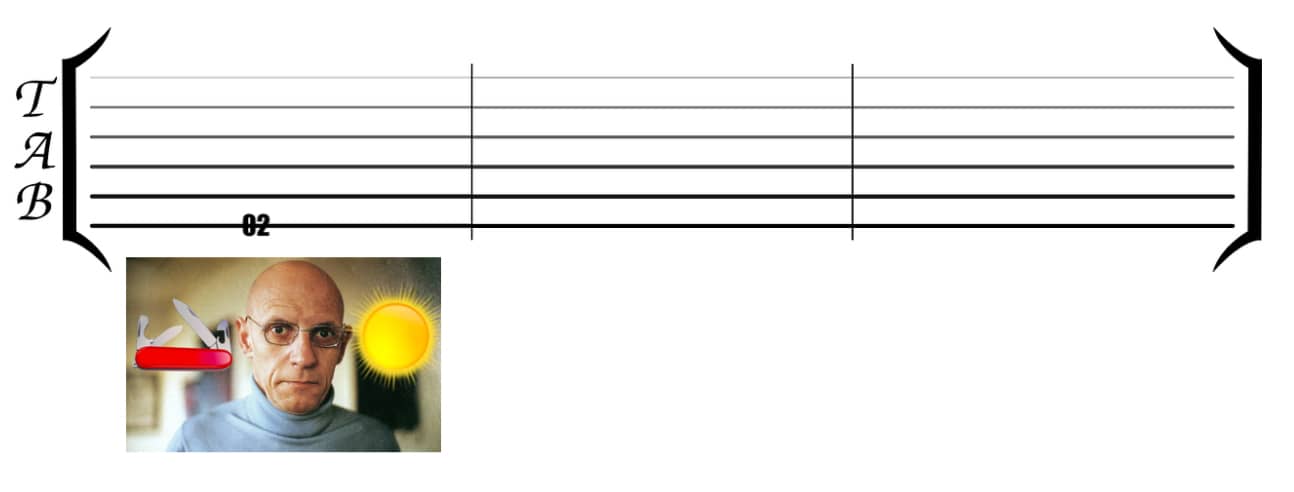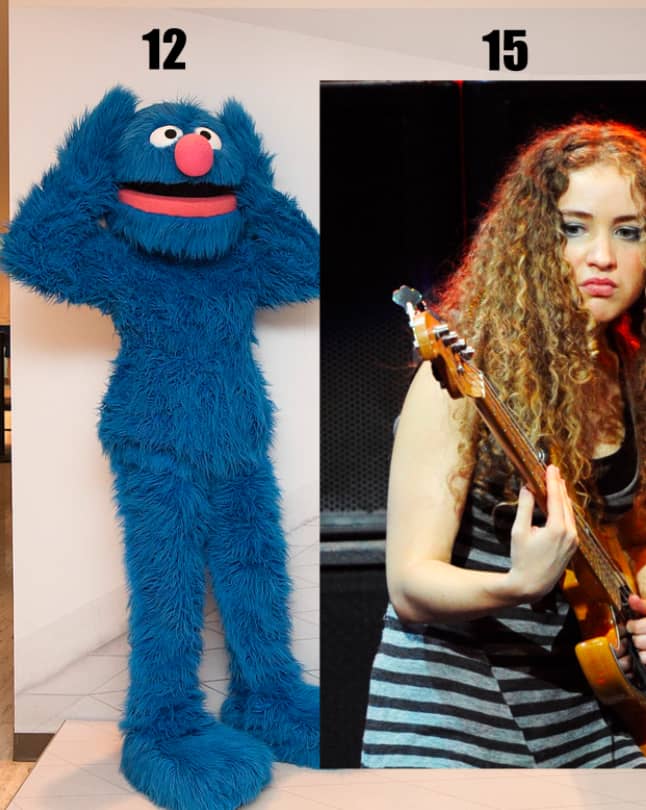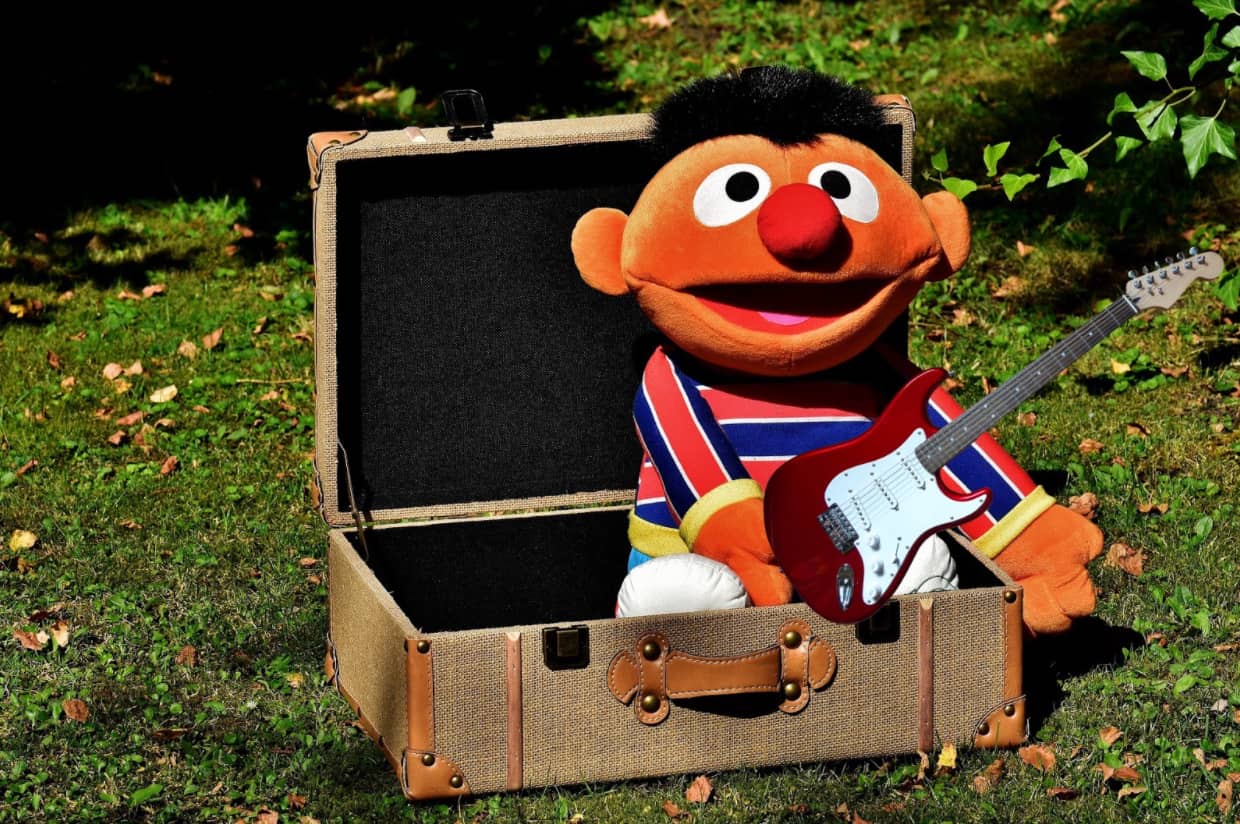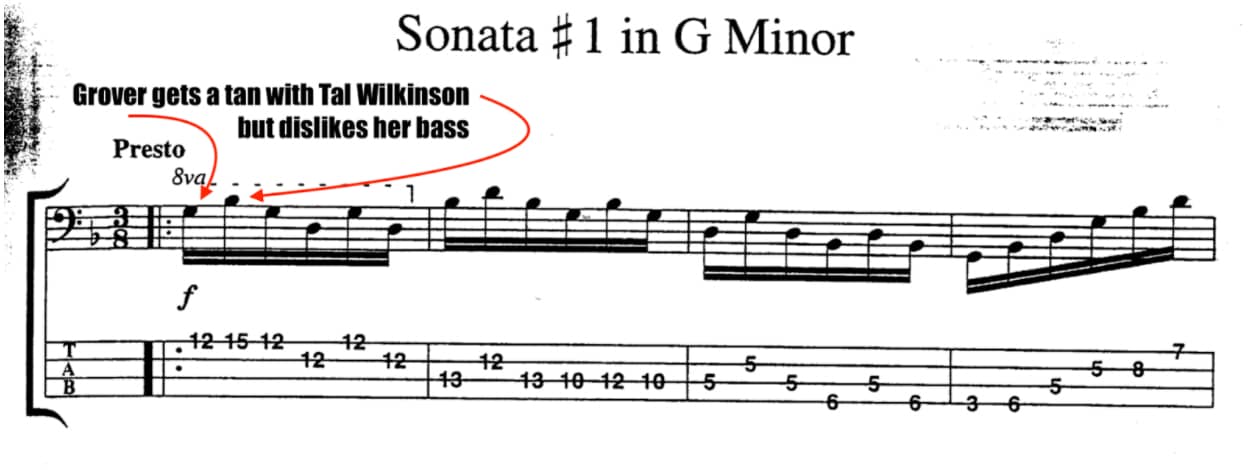 When I learned the Bach cello pieces for bass, some fretboard memorization tricks made everything faster.
When I learned the Bach cello pieces for bass, some fretboard memorization tricks made everything faster.
I’ll share them with you on this page.
Then I’ll give you some exercises for mastering them.
What you’ll discover on this page is a bit different than other material you’ll have seen on memorizing the fretboard.
But I think you’ll find it useful and interesting, as did my friend John, who joined me on the podcast to discuss just how far he’s taken this technique.
But first, you might want some proof that I can actually play.
And rest assured, I didn’t just use these techniques for Bach.
When The Outside called me at the last minute to go on tour and work on a new album back in 2013, these techniques were essential to how I got up to speed with their complicated music quickly.
It was an honor and a privilege to serve – and what a dream come true to travel around with them and even shoot a video.
So if you also want to learn music faster and remember it for the long term, let’s get started.
How To Memorize The Fretboard In 9 Steps
When I started applying mnemonics to the fretboard, the idea of tablature was very useful.
As you probably already know, tablature assigns a number to each fret.
I realized that if you were to turn each number into an image, you could instantly memorize the name of the note and its position at the same time.
For that reason, your first step is clear.
One: Think Of Your Fretboard In Terms Of Numbers
This step is simple enough.
Most guitars feature dotted frets, indicating 3rd, 5th, 7th and 9th frets. The octaves of these are typically repeated higher up the neck.
In other words, the note at the 3rd fret will be the same note in a higher octave at the 15th fret.
Two: Assign A Character To Each String
When you’re first learning, it can be difficult to remember the open note of each string.
But it doesn’t have to be if you make each string memorable.
Using a variation of the pegword method, give each string a name based on a familiar figure.
For example, E makes me think Ernie from Sesame Street.
Here are mnemonic examples for the other strings:
- A = Al Pacino
- D = Dracula
- G = Grover
- B = Batman
- E = Elvira
Obviously, there are endless figures you can choose from. What matters is that you link the letter of the note with the first name of the figure. And make sure that figure is truly familiar to you.
All memory techniques work by ensuring that your associations reduce the thinking you have to do thanks to dynamic familiarity you already have.
Three: Learn The Major System
To use the technique on this page, you’ll need to be able to assign images to numbers.
Now, here’s a quick warning:
Some people are going to think this is too much work.
Please don’t be that way. Memory competitors use something very close to this when memorizing a deck of cards – and some can now do all 52 in under 12 seconds.
The easiest and most logical way to apply this approach to the fretboard is by using something called the Major System.
Using it, I can easily remember when I have to play an F at the first fret of the E string because that is Michel Foucault looking sad with Ernie from Sesame Street.
“Sad” is my image for 01, built from the Major.
If I see Foucault making a sandwich for Dracula, then I can remember that this F needs to be played on D string at the third fret because that is my image for 03.
Technically, you only need these images from 01-12 because you can repeat them all after the 12th fret.
I prefer to have images for all the way to the 22nd fret, but that’s because I play a Fender Jazz American Deluxe bass (worth it).
Here’s a discussion with an acoustic guitar in hand to discuss how it all works:
Four: Practice Naming The Notes On Just One String
Let’s say you choose Ernie for your low E string.
I chose Foucault for “F” and my symbol of 01 is sad.
An easy way to remember that the next note over is F# would be to give Foucault something sharp – like a knife.
Since it’s on the 2nd fret of the E string, he can be helping Ernie cut the sun (02 = sun).

You would then proceed to the next fret and the next image.
Five: Practice Naming The Notes While Looking At Tablature
Once you’ve developed your system, get out some tablature and practice naming your images for the notes you see on the tab.

Pick a piece that really covers the fretboard. Bach pieces or progressive heavy metal song with plenty of guitar solos are ideal
Six: Apply The Technique By Memorizing Songs
Let’s say you’re memorizing Sonata 1 in G Major by Bach.
If you’re like me and hate looking back and forth at the music and your fretboard, what you’ve learned above will help you look at the sheet music once and be done with it.
That’s because when you have an image for each fret, you can make a little story.
And to remember the beginning of this piece, I imaged Grover interacting with bassist Tal Wiklinson.
The trick is to see the story you create as dynamically in your mind as possible.
Since 12 makes the word “tan,” and 15 make the word “Tal,” I imagined Grover (G string) getting a tan with bassist Tal Wilkinson. He doesn’t much like the sound of her bass though – and his reaction makes this phrase instantly memorable.

Seven: Apply The Technique To Fretboard Patterns
Another way to practice memorizing the fretboard is to use this technique to memorize the modes.
These are:
When you assign these patterns to the fretboard by note and position, you have essentially turned the fretboard into a Memory Palace.
If you find it useful, you can also “map” each of these designations into a room in your home. That’s essentially what John did and discusses in the podcast interview I linked you to at the top of this post. This course takes you even deeper into the process:
Eight: Continue To Work On Your Spatial Awareness
As you continue to apply this technique, memorize simple and popular songs. For example, learn Stand By Me.
Then, when you hear new songs, try to figure out what key they are in. Find the root note and start to imagine how the song would play out on the fretboard.
You can imagine it purely in your mind, but for best results, write out where on the fretboard you think all the notes should go.
This is a tremendously powerful exercise. Even if you make mistakes, you will benefit from imagining songs on the fretboard throughout the day. Doing so has helped many composers write songs in their mind and write them out, perfectly visualizing entire compositions.
Nine: Play Music With Others And Discuss
Being with other musicians is one of the best things you can do. No matter what level you’re currently at, the time to get started hanging out with them was yesterday.
You can learn so much from being with them. Ask lots of questions and get them to teach you songs they’ve written. Show them the songs you’ve written and use the names of the notes you’ve memorized.
Also ask them for book recommendations. The more you come across the names of notes and discussions of them, the more you’ll find yourself memorizing certain aspects of the fretboard on autopilot.
Enjoy Applying Mnemonics To Music
Learning music can feel overwhelming.
But proceeding through all the frets, one string at a time, will help reduce the overwhelm. Adding music mnemonics and learning the circle of fifths will help even further.
And the best part is this:
Once you’re started using memory techniques, you can also memorize lyrics and chord progressions using similar techniques.
So… what are you waiting for? Get out that guitar, start memorizing and don’t forget to share the music with your friends. You’ll learn a lot faster when all of these aspects are combined.
Related Posts
- How to Remember Bass Clef Notes: Bass Clef Mnemonic & More
You can stop struggling to remember the bass clef. The standard mnemonics don't work, so…
- How to Remember Key Signatures (From a Musician and Memory Expert)
If you're wondering how to remember key signatures, stop struggling with ineffective techniques. This quick…
- Memorize Lyrics, Play Bass And Sing Challenge Post #1
Taking Scott Devine's Funk Disco challenge by adding a level of difficulty. I have to…








